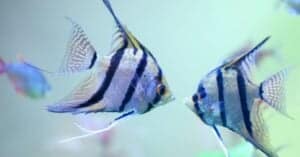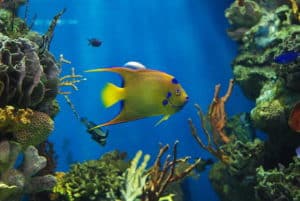When you first get a new angelfish, you may find yourself wondering whether or not it’s a male or female. After all, you might have your heart set on a specific sex for breeding purposes. However, like many fish, it can be hard to tell them apart. In this article, we will compare male vs female angelfish and show you a few useful ways to tell them apart.
When we’re finished here, you’ll have several different options for differentiating the males and the females.
Comparing a Male and a Female Angelfish
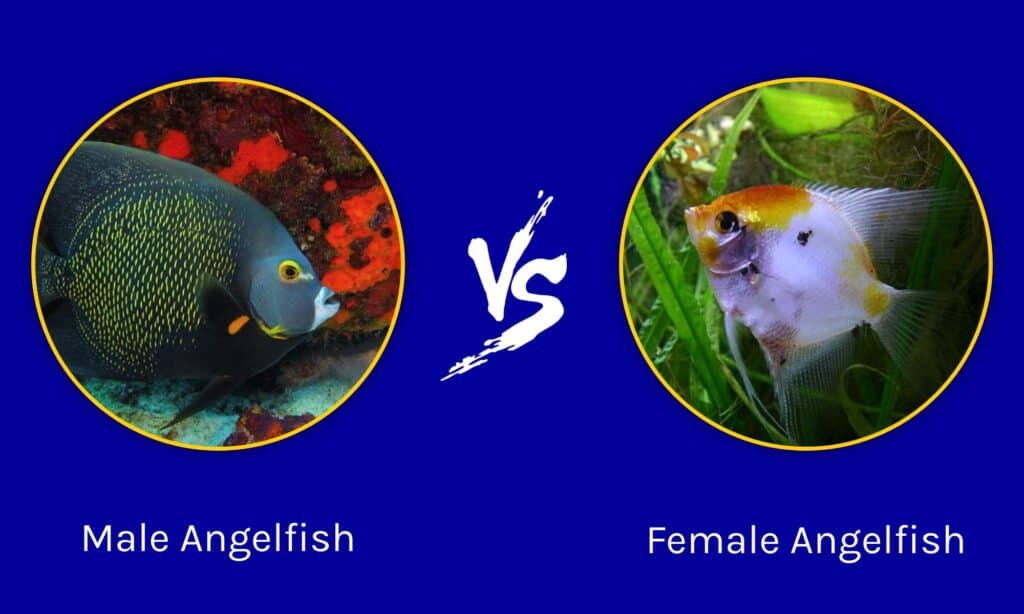
| Male Angelfish | Female Angelfish | |
|---|---|---|
| Size and Growth | – May grow up to 1/3 of the size larger than females – Often grows faster than female angelfish | – Slightly smaller than males, usually not enough to differentiate by size alone – Grows more slowly than males |
| Body Shape | – Almost circular body – Head is not as round due to the nuchal hump – Develop a nose ridge when they mature | – More angular body shape on top and bottom of their body – Rounded head – Wider stomach when viewed from in front of the fish – Lacks a pronounced nuchal hump on the top of the head |
| Ventral fins | – Ventral fins (feelers) are “forked” or frayed | – Ventral fins are not forked or frayed |
| Breeding Tubes | – Pointed, thin breeding tube on the underside | – Rounded, blunt ovipositor tube on the underside |
| Behavior | – Males tend to be more aggressive and will chase away other fish – Pair off with one or more females | – Often pair off with males during breeding time – Don’t engage in chasing behavior to breed, but they can chase and turn violent |
The 5 Key Differences Between a Male vs Female Angelfish
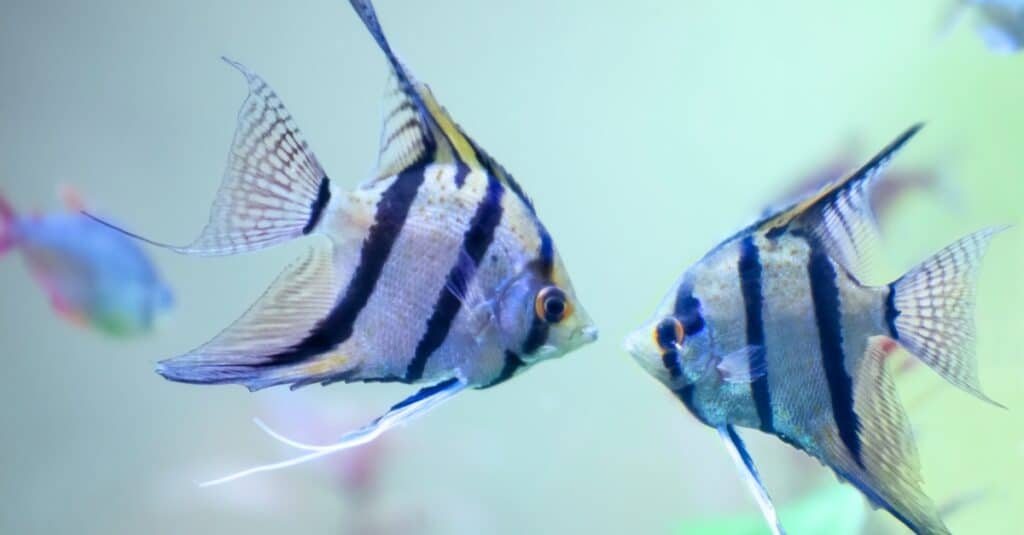
Silver angelfish enjoy living alongside other members of their species.
©iStock.com/TatianaMironenko
The greatest differences between a male angelfish and a female angelfish lie in their breeding tubes, ventral fins, and body shapes. Male angelfish have an almost circular body that is interrupted by a nuchal hump on their head when they’re mature, possess forked ventral fins, and have a pointed, thin breeding tube. Female angelfish are more angular on the ventral and dorsal portions of their body, but they have a smoother, more rounded head than males.
These major differences are key elements to differentiating these fish when they’re young. However, they’re not the only factors we’re going to examine. Let’s look at all five key differences between a male vs female angelfish to help you learn what’s in your tank.
Male vs Female Angelfish: Size and Growth
Male angelfish are typically a little larger than male angelfish. In some species, the male angelfish can grow up to 30 percent larger than a female angelfish. Also, males tend to hit a growth spurt and outpace the growth of female angelfish for some time. They reach their largest size faster than females.
Male vs Female Angelfish: Body Shape
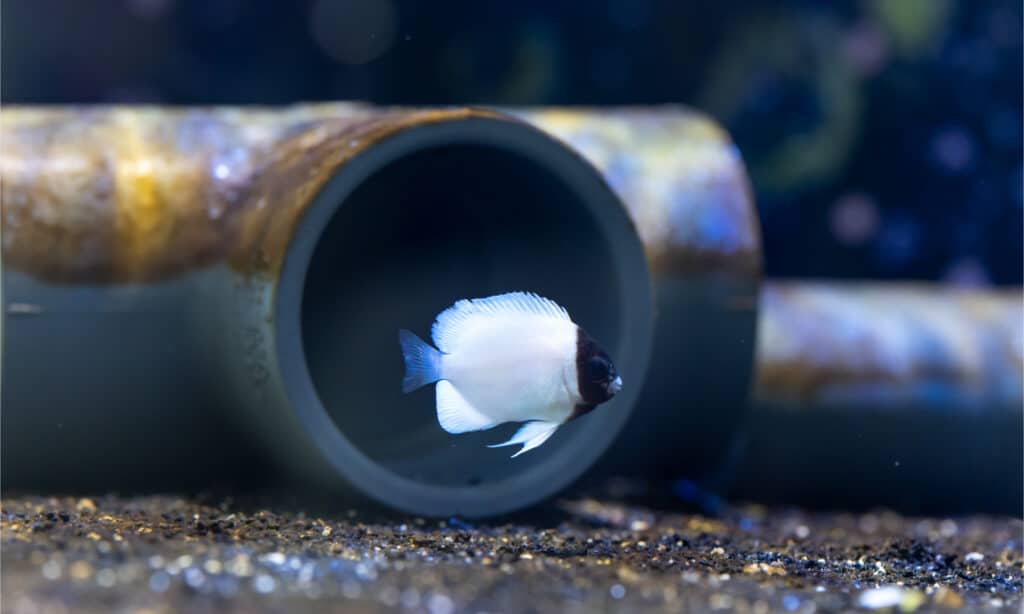
Female angelfish have more angular bodies than males.
©chonlasub woravichan/Shutterstock.com
The differences in body shape between a male angelfish and a female angelfish are some of the easiest ways to tell the two fish apart. Overall, males have a rounder body appearance on their dorsal and ventral sides. Female angelfish have angular sections on their ventral and dorsal sides, giving them a less circular appearance when compared with males.
However, females have rounder heads than males. That is, their heads are more perfectly rounded. Males have two elements that change as they grow. First, they develop a nose ridge or band when they mature, disrupting the perception that their head is rounded. This is not found in females.
Also, they develop a nuchal hump, a bump above their eyes that sticks up higher than the rest of their head. This gives their head an oblong shape that is quite noticeable. Unfortunately, these things that make males unique don’t develop until the fish are mature. Females, when viewed from the front, also have a wider stomach than males, but that is hard to see without another fish for comparison.
While body shape is a useful technique for identifying males and females, it must be used in conjunction with other techniques to be certain.
Male vs Female Angelfish: Ventral Fins
The ventral fins of a male are forked and frayed compared to those that females possess. The ventral fins of these fish are also referred to as feelers. They’re small stringy appendages that don’t look like a true fin.
That being said, females have ventral fins with a rounded, whole shape to them. Males’ feelers tend to split into several strands toward the end.
Male vs Female Angelfish: Breeding Tubes
Another way to tell male and female angelfish apart from each other is their breeding tubes. Once again, this is a difference that requires the fish to be mature before it’s useful to you. In this case, males have a pointy, thin breeding tube for mating. This is obvious on their underside once they reach maturity.
However, female angelfish have a rounded, blunt-shaped ovipositor that is larger on their underside. This is far more obvious than the male’s breeding tube, too.
Male vs Female Angelfish: Behavior
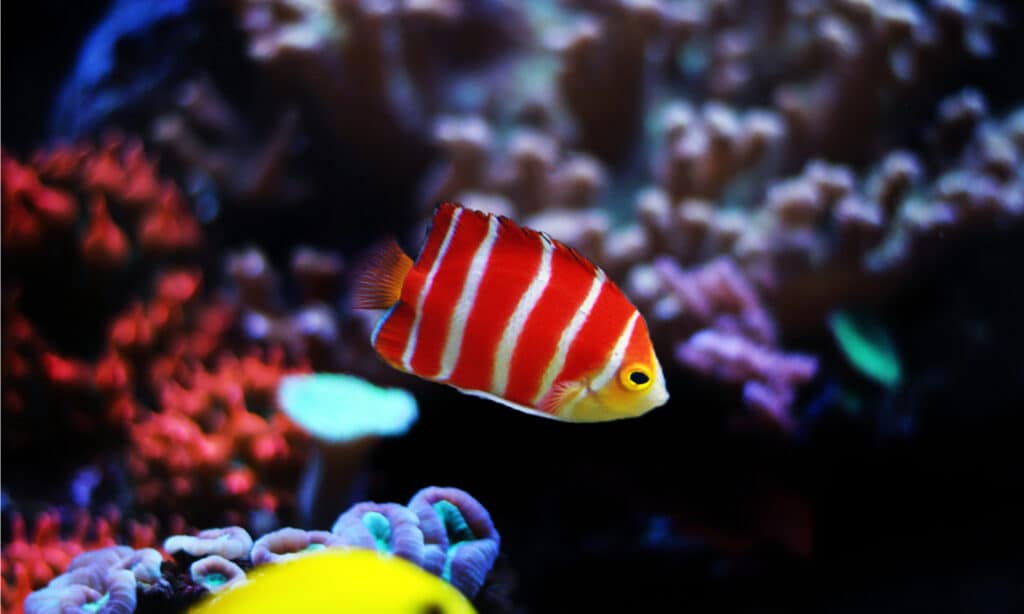
Angelfish exhibit different behaviors in captivity and in the wild.
©iStock.com/vojce
Most males and females have very different behaviors, especially when they become sexually mature. Male angelfish will chase away other males when they pair with females. Males are often bullies. Aside from chasing males away, they will relentlessly pursue females as part of their mating rituals. So, if you see one angelfish racing after the other, there’s a good chance that it’s a male.
That doesn’t mean females don’t chase, though. While they don’t chase as often for breeding purposes, they have no problem chasing away or harming other fish that they don’t like. All of these behaviors we mentioned are common but using them to tell a male from a female is hard. After all, you need both sexes that are mature at the same time.
As you’ve seen, it’s hard to sex these fish early in their lives. They undergo many changes as they begin to mature. However, you can use body shape, growth, ventral fins, and breeding tubes to differentiate them at different times in their lives. Hopefully, this information helps you determine whether you have males or females as your pet fish.
Can Two Male Angelfish Be in a Tank Together?
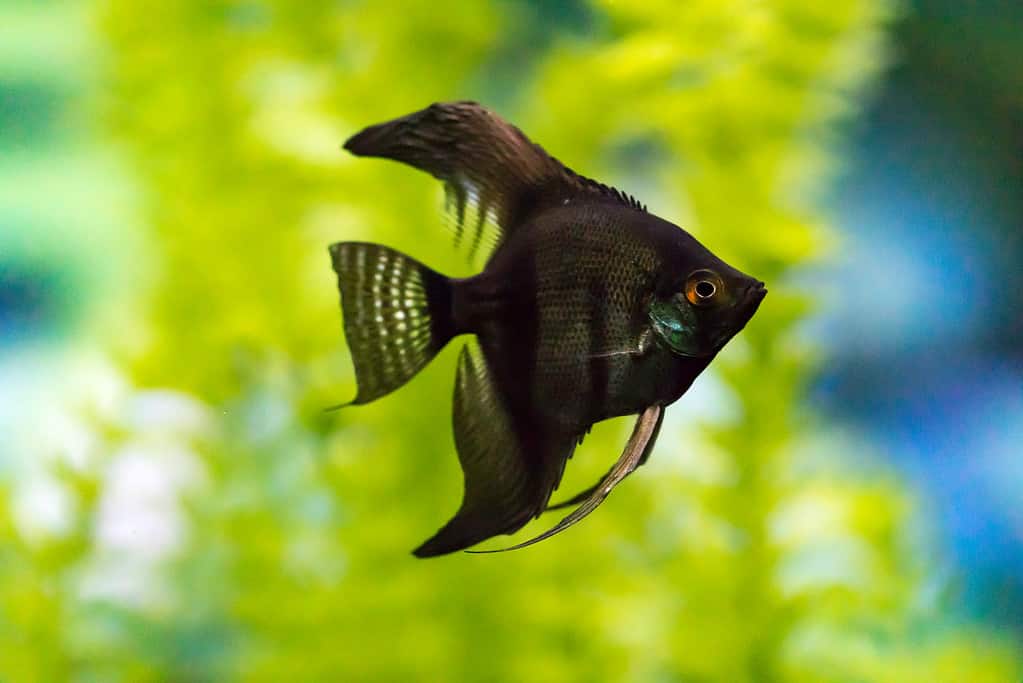
Male angelfish are typically less aggressive than females and you provided the tank size is proper, you should be able to keep a few in the same tank.
©Saad315/Shutterstock.com
Males are considered less aggressive than females and typically do really well together in a tank. If you aren’t thinking of breeding them, it may even be better to keep males rather than introducing females into the tank. It is best to have a tank size no smaller than 20 gallons so they have plenty of room for them and their fins to move around once they have grown.
Keep in mind that these fish can get territorial so should you add more, you may want to increase the tank size as well. If you notice your angel fish beginning to fight, you may also want to change the water as they release chemical compounds into the water when they urinate as a way of communicating their social status.
The photo featured at the top of this post is © Galina Savina/Shutterstock.com
Thank you for reading! Have some feedback for us? Contact the AZ Animals editorial team.




